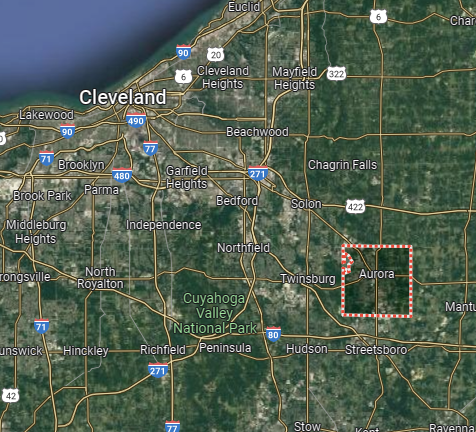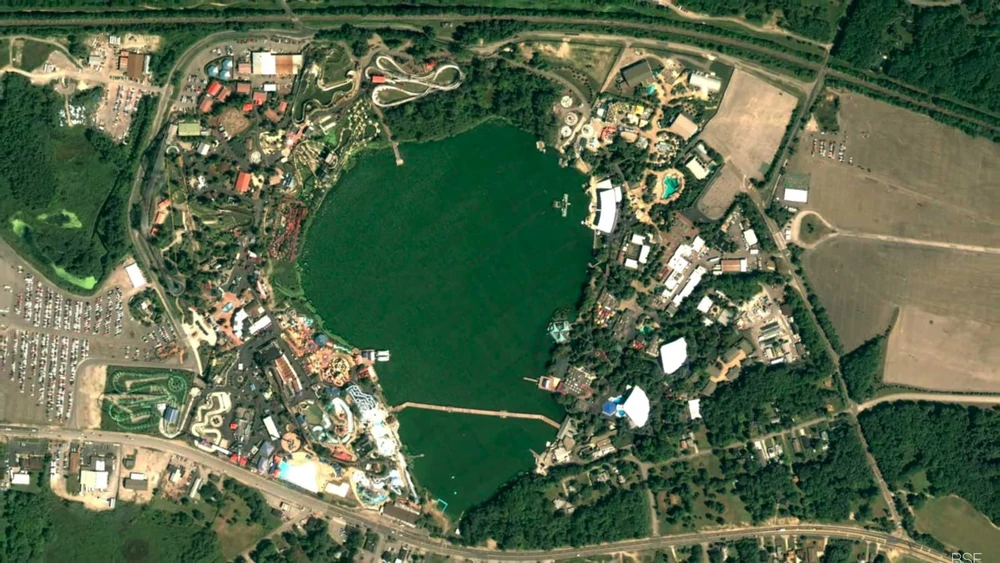The biggest reasons that Geauga Lake ultimately failed
Now, let’s examine the numerous reasons why Six Flags Worlds of Adventure (and thus Geauga Lake) ultimately failed.
Beginning with marketing and operations: Six Flags was extremely proud of and relied on marketing the amusement park as three ‘parks’ for the price of one. However, there was no way to get guests through the gate at the price required to maintain and operate a park of that scale. Therefore, the admission price was significantly below what the park required to operate.
It would take years to effectively recoup the cost of the park’s numerous expensive new additions. This was a problem throughout the chain, not just at Six Flags Worlds of Adventure, as Six Flags appeared to be more concerned with large marketable attractions than a sustainable operation and a positive visitor experience.
We must also focus on the infrastructure around the park. Aurora, Ohio is not an ideal location for the largest theme park in the world. While initially sustainable for regional parks with summer operations, the lack of wide roads, adjacent hotels, and major highway infrastructure leading to Cleveland (about 40 minutes away) made it difficult for Six Flags Worlds of Adventure to support the visitors it needed to be successful. It is difficult to operate a multi-day destination without nearby accommodations.

Guests were unable to commit to multi-day visits, which severely impacted Six Flags Worlds of Adventure’s revenue. Six Flags also permitted passholders from adjacent parks, such as Six Flags Darien Lake, Six Flags Great Adventure, etc., to enter for free, further reducing their revenue.
Inside the park, Six Flags Worlds of Adventure consisted of two average regional parks with aging infrastructure, now attracting significantly larger crowds. This meant that the park’s original midways, entrances, restrooms, and restaurants were inadequate to accommodate the 2001 visitor influx. In addition, the park featured two expansive parking lots, entrances, and visitor relations buildings, among other amenities. Not only was it challenging for the personnel, but it was also confusing for the guests, especially considering the park’s size.
Simply put, Six Flags Worlds of Adventure (and all of its added infrastructure to connect and expand the existing two parks) was too large. As a point of comparison, Six Flags Worlds of Adventure was 700 acres, which is 10 times the size of Disneyland in Anaheim and 200 acres larger than the current largest theme park in the world, Disney’s Animal Kingdom (which is 500 acres including the Kilimanjaro Safari grounds).

A facility this size is difficult to staff. Especially when there is not a sizable local population from which to draw staff due to the park’s isolation. Due to the rapid expansion of the park, there was simply no time to create adequate staffing for the park. The staffing issues were evident at every level. In light of all of these variables, the guest experience was too unsatisfactory to encourage visitors to return in the years that followed. Combined with a tourist slump due to the events of 9/11, the Six Flags Worlds of Adventure attendance decreased a shocking 2 million in just two years from 2.7 million in 2001 to 0.7 million in 2003.


